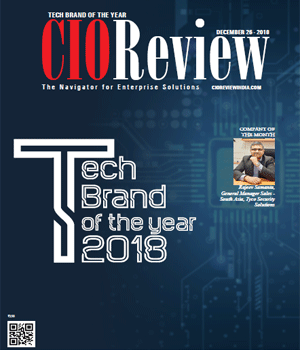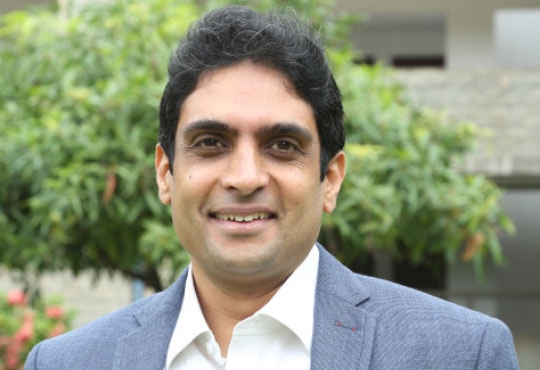
Software Test Automation - A step towards excellence
Preeti, Director, Engineering Hughes Systique | Friday, 06 October 2017, 06:50 IST
 Overview
Overview
Automated software testing has always been an essential component of successful software development projects. A well-defined and structured automation testing strategy enables the organizations to achieve repeatable and measurable Software Quality. Various critical benefits entailing comprehensive test automation are:
• SavingTime &Capital: short Multiple Test cycles with Agile & DevOps methodology requiring repeated testing. With automated tests the tedious manual testing efforts can be reduced from days to hours & leverage to improve resource productivity.
• Increased Test Coverage: it gives cumulative coverage to detect errors &increases the depth & scope of the tests to deliver higher software quality
• Accuracy in results: manual testing often, introduces mistakes owing to the monotonicity of tasks, automated tests improve this by running precise verification steps
• Simulations: Automated tests can create tens, hundreds, thousands of users for a controlled environment which manual testing cannot
• Continuous Delivery: Automated tests can enable organizations to churn out builds faster by integrating strong integration & deployment tests, enabling tests to run every code check in
Owing to the huge applications impact and diverse operating plethora, test automation strategies are not “one size fits all” approach.Since different applications, hardware/software use cases make each System Under Test (SUT) unique on its own. Henceforth, it’s imperative that a deep dive to be done tounderstand the needs of the automation. A critical step in this endeavour is selection of the appropriate test tools.
Automation Tool Selection
The automation tools not only have to be domain/ technology specific, but covering all the testing needs addressed above encompassing, both functional and non-functional software requirements. Few key factors to be considered are:
• Compatibility with AUT(Application Under Test):Test tool selection largely depends on the technology that the AUT is built on.
• Platforms to be tested: Application developers have inherent implicit requirement to support the application on all possible platforms which thereby imposes the requirement on testing
• Ease of use and reusability
• Extensive documentation & rapid support
• License Cost
• Integration with existing tools & components
Evaluating the effectiveness of Test Automation
Once the automation tool is identified & relevant requirements have been addressed, & required automation effects are achieved, the next critical step is to evaluate the efforts spent on development of such a tool or automation framework. ROI (Return of Investment) is one of the key metrics that can be used as an indicator of the cost saving vsthe efforts spent in developing the automation tool.
ROI (Return on Investment)
Generally, it’s said that automated testing can extend the coverage & scope of testing, reduce costs, mitigate risk & find defects faster. To evaluate the ROI of test automation, choose any specific set of tests required for qualifying a build, & compare the manual test case efforts vs automation test effort. Following inputs are required to calculate this:
• The cost in man-hours of manual testing
• Automation tests development costs
• Automation tests execution time
• Test analysis time
• test maintenance time
• Information about frequency of testing
Supposing a set of test cases run every day & required 8 man-hours, the automation of the same set took 48 hours & after automation same tests take 1 hour to run. Obviously, after 6 cycles of execution, organization would be saving on roughly 4-5 hours of manual efforts per cycle considering that automation results analysis takes 2 hours.
Looking at above data, not only we test quicker, but test coverage is larger, which means we can find more bugs! But, finding bugs certainly means we will have more work to do to fix them right? Not necessarily. It costs much less to fix bugs that are detected earlier in the development cycle.
It’s innocuous to say that there is a high ROI of software test automation & that it is a WISE investment as it provides following values to a project or organization:
• Improve software quality & scope
• Avoid operational problems & simplifies routine tasks
• Maintain a good organizational image
• Decrease cost of fixing bugs substantially
• Run more tests without increasing costs
• Find hard-to-detect defects earlier, when they are easier to fix
Conclusion
Since there are several factors that affect the ROI of test automation, it is recommended to introduce refinements to the overall automation testing by introducing efficient test automation tools, test coverage, technologies involved, test effectiveness, platforms etc.It is also worthwhile to note that product roadmap plays an important role which helps in starting of test automation at right phase & defines reusability percentage of test automation.
Future
Deficits of manual testing paved the way for automation, but with new challenges, new QA techniques are being developed. Machine Learning, Artificial Intelligence are not only buzzwords but very much real. From doing the predictive analysis of the test results, narrowing down the problem areas, extracting detailed debugging logs to the developers these AI frameworks are being used in various QA areas to make testing more robust and less error prone. Testing is moving closer to development with emphasis on integrated software development teams with Fast Paced Quality Releases as the paramount goal.
CIO Viewpoint
Hyper-Converged Infrastructure: The Next Big Thing
By Amit Jaokar, EVP - IT, Choice International
Impact of Big Data on Indian Telecom Services
By Ram Prasad Mamidi, CIO, Tata Teleservices
The Many Benefits of Virtualization
By Krishnakumar Madhavan, Head - IT, KLA-Tencor India
CXO Insights
Dell Designathon - A Workstation of Ideas and...
By In conversation with Srihari Palangala, Director and Marketing Head, Dell EMC, at the final leg of Dell Designathon held in Bang
Automatic Workflow with Digitized ECM
By Makarand Sawant, Senior General Manager - IT, Deepak Fertilisers and Petrochemicals Corporation
Internet of Things and Artificial Intelligence...







